 Dundas, Ontario Canada 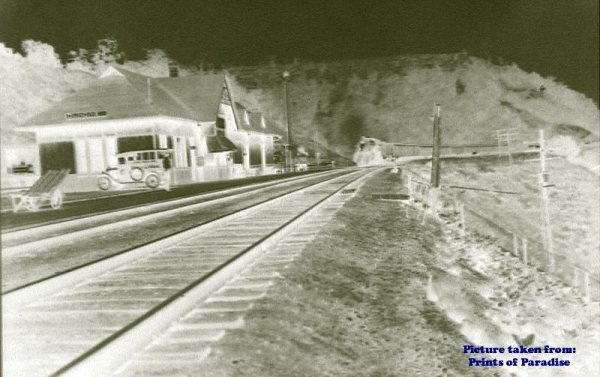 The first railway station on the escarpment over Dundas was first erected in 1853. The Great Western Railway ran its operation til 1882. The Grand Trunk Railway took over and ran til 1923. It was then taken over by the Canadian National Railway Company in late 1923. They owned the station until fire burnt it down in 1988. Only one rail line was there at the outset, but another line was laid in 1902. An additional side track was laid in 1910. The photo above was taken in 1902. The quiet solitude of the little town of Dundas surrounded the lonely train station on Christmas night in 1934. But the unfortunate events that were about to transpire would change that solitude into tragic screams. The train station sat just off of Highway 8 in Dundas, Ontario. Being a small station, there wasn't usually a whole lot of activity. But because of the holidays, and all of the celebrations that would be attended that day, extra trains were dispatched to handle the returning Christmas passengers. These trains were called "specials". On the night of December 25, 1934 at approximately 9:10 PM one of the specials, being east bound, pulled into a side track about 400 yards beyond the station with technical problems. They had a hot crank pin and wanted to see if sitting for a few minutes would cool it enough to continue on their way. After sitting for about 10 minutes the engineer, the conductor and the brakeman discussed the problem and it was decided to phone ahead to Hamilton to have a replacement engine waiting. The crank pin was still too hot to travel much farther. A second brakeman who was also on the train was sent back to the station to phone in the request. As he was returning to the train, which he believed to be on the main track, he saw another train, the Maple Leaf Flyer, approaching from the east. Fearing the Flyer would ram the special as it sat on the main line, he immediately turned the switch to the siding so it could pass by harmlessly. 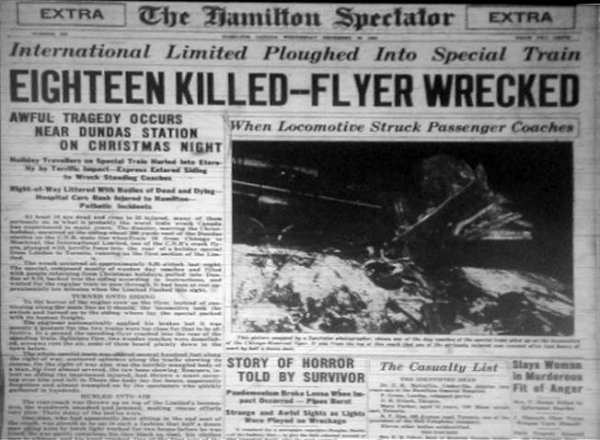 Little did he know that his misconception of the special's location would lead to such horrifying results. Instead of passing harmlessly by, the Flyer turned onto the siding where the special sat cooling its crank pin and with terrible force, slammed into the back end of the wooden cars sending splinters and passengers flying everywhere. 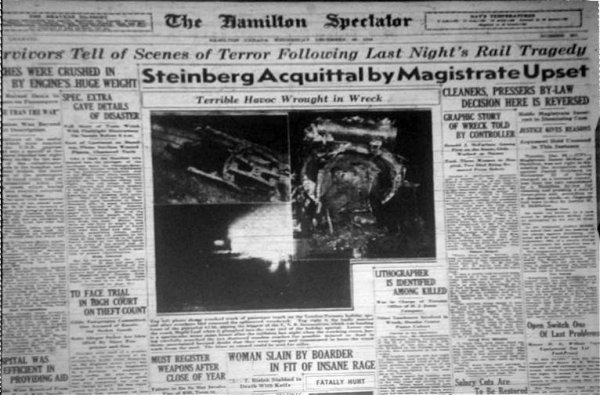 The Flyer had only seconds to apply the brake before the impact, so naturally it did little good. But with quick thinking and foresight, the engineer and brakeman of the Maple Leaf Flyer disconnected their passenger cars just before the impact which no doubt saved countless lives that night. None of the passengers on that train were seriously hurt. 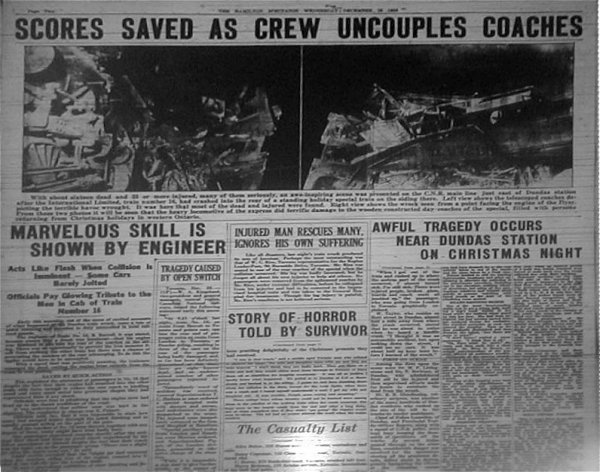 The holiday special was made up of mostly wooden cars, and when the Flyer, which was made up of sturdier steel cars, slammed into it the special's cars began to buckle. One way to describe the outcome would be to liken it to an accordian. Many were trapped inside the crumpled cars, in the dark in more ways than one. The lights had gone out as soon as the two trains collided, leaving many of the injured to worry about fire. (The lights were run on gas.) 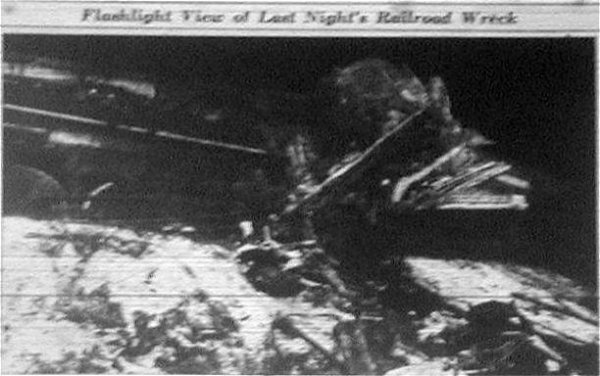 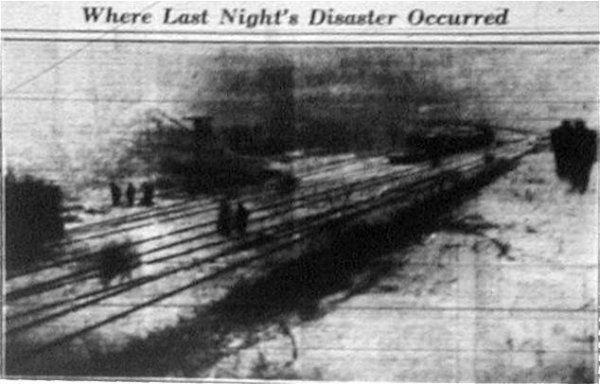 The two rear cars were shattered beyond repair. Some of the passengers were beyond help. In total 15 people died in this tragedy, and 33 more were sent to the hospital with injuries ranging from broken bones to serious internal injuries. The baggage room of the station was reported as looking like a field hospital as the injured were brought in to await transportation to General Hospital. Many of the dead lay out among the broken timbers and splinters of the train while the injured were taken care of. 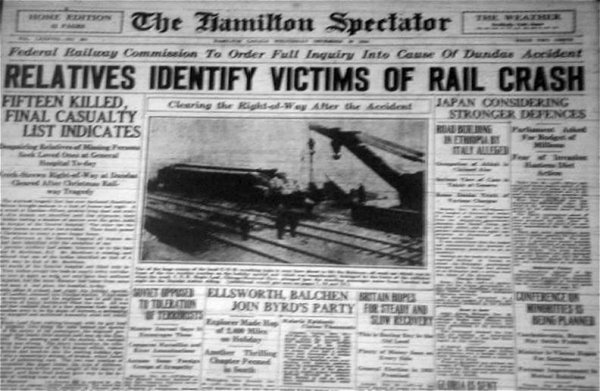 The area surrounding the crash site was strewn with holiday packages that would never be delivered and the body parts of those dismembered passengers. It was originally believed that 18 had perished in this gruesome accident. But after careful tallying, a total of 15 fatalities was reached. A rather somber conclusion to what should have been a joyous holiday. 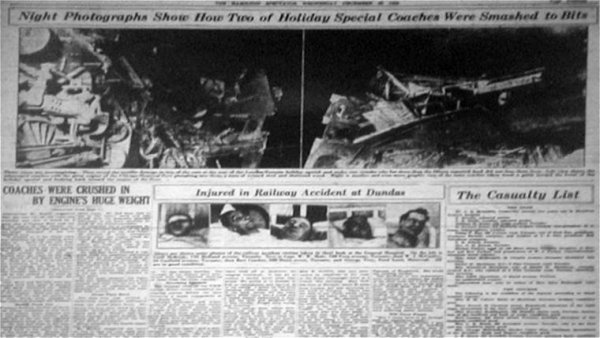 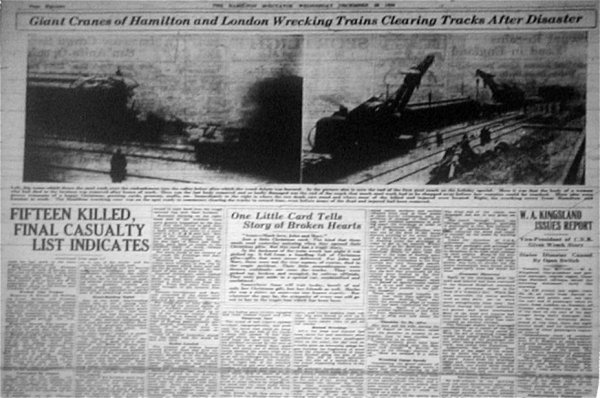 As the stream of injured finally dwindled down, the dead were placed in the baggage room to be identified before being taken to the morgue at the General Hospital. 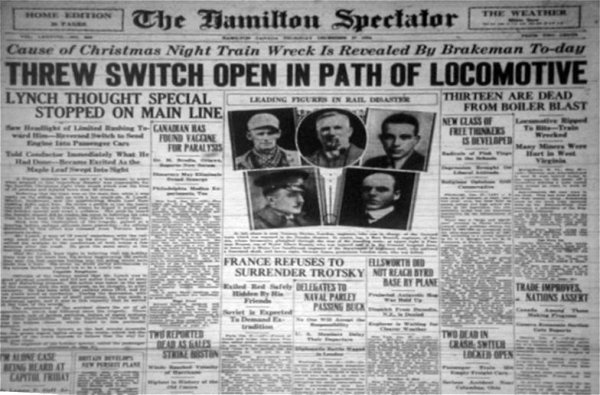 Through all the tragic events, strangely enough a cat survived without even a scratch to show for its journey. The cat had been nestled snuggly into a travel bag made specifically for transporting felines. And it was riding comfortably in the baggage car. 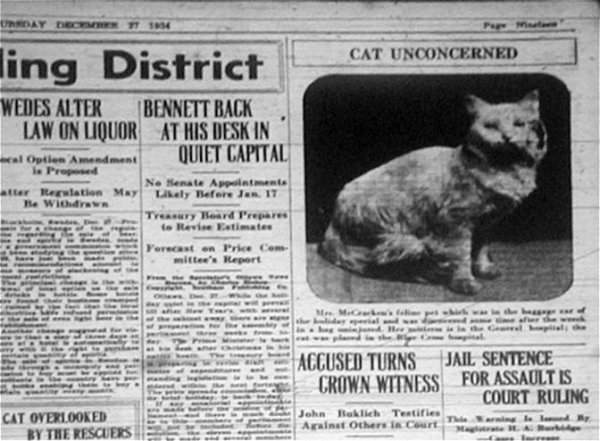 After the injured passengers had been looked after and the dead had been transported to the morgue, the railroad workers began gathering up the baggage and parcels that were thrown about. When the cat's travel bag was opened in an attempt to identify the owner of the bag the cat jumped out in a startled huff and gave the baggage handlers a merry chase. The second image above was taken from the Hamilton Spectator Special Edition that was released early in the day on December 26, 1934. The pictures following were taken from the regular edition of the Hamilton Spectator which was released in the early evening hours of December 26, 1934. The last picture was printed in the December 27, 1934 edition of the Hamilton Spectator. Many thanks to the Hamilton Spectator and the Hamilton Public Library Special Collections Department. Dundas Train Station History (2) July 20, 2002 July 29, 2002 November 24,2002 December 25, 2002 (1) December 25, 2002 (2) 
   |